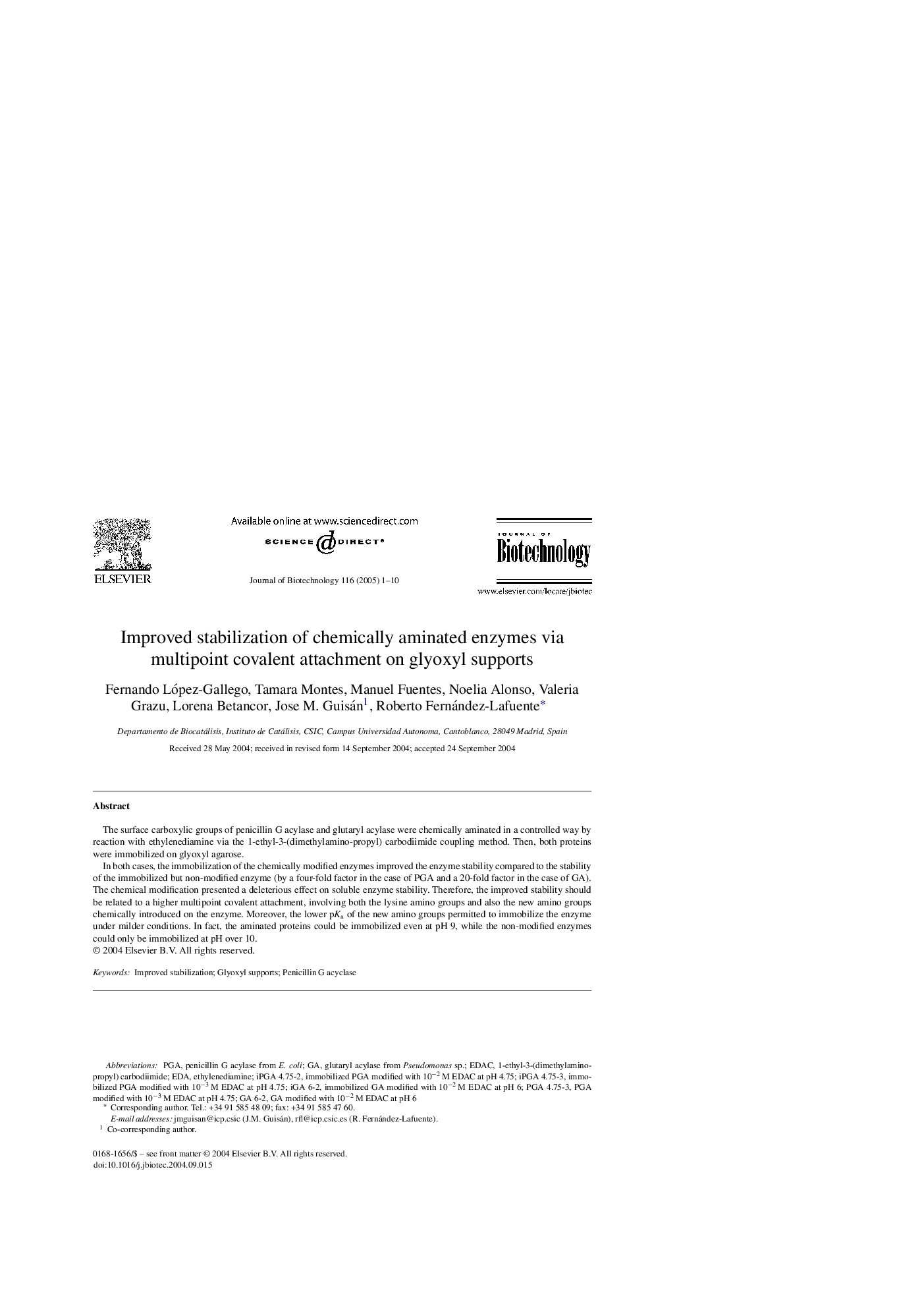| Article ID | Journal | Published Year | Pages | File Type |
|---|---|---|---|---|
| 9604450 | Journal of Biotechnology | 2005 | 10 Pages |
Abstract
In both cases, the immobilization of the chemically modified enzymes improved the enzyme stability compared to the stability of the immobilized but non-modified enzyme (by a four-fold factor in the case of PGA and a 20-fold factor in the case of GA). The chemical modification presented a deleterious effect on soluble enzyme stability. Therefore, the improved stability should be related to a higher multipoint covalent attachment, involving both the lysine amino groups and also the new amino groups chemically introduced on the enzyme. Moreover, the lower pKa of the new amino groups permitted to immobilize the enzyme under milder conditions. In fact, the aminated proteins could be immobilized even at pH 9, while the non-modified enzymes could only be immobilized at pH over 10.
Keywords
Related Topics
Physical Sciences and Engineering
Chemical Engineering
Bioengineering
Authors
Fernando López-Gallego, Tamara Montes, Manuel Fuentes, Noelia Alonso, Valeria Grazu, Lorena Betancor, Jose M. Guisán, Roberto Fernández-Lafuente,
